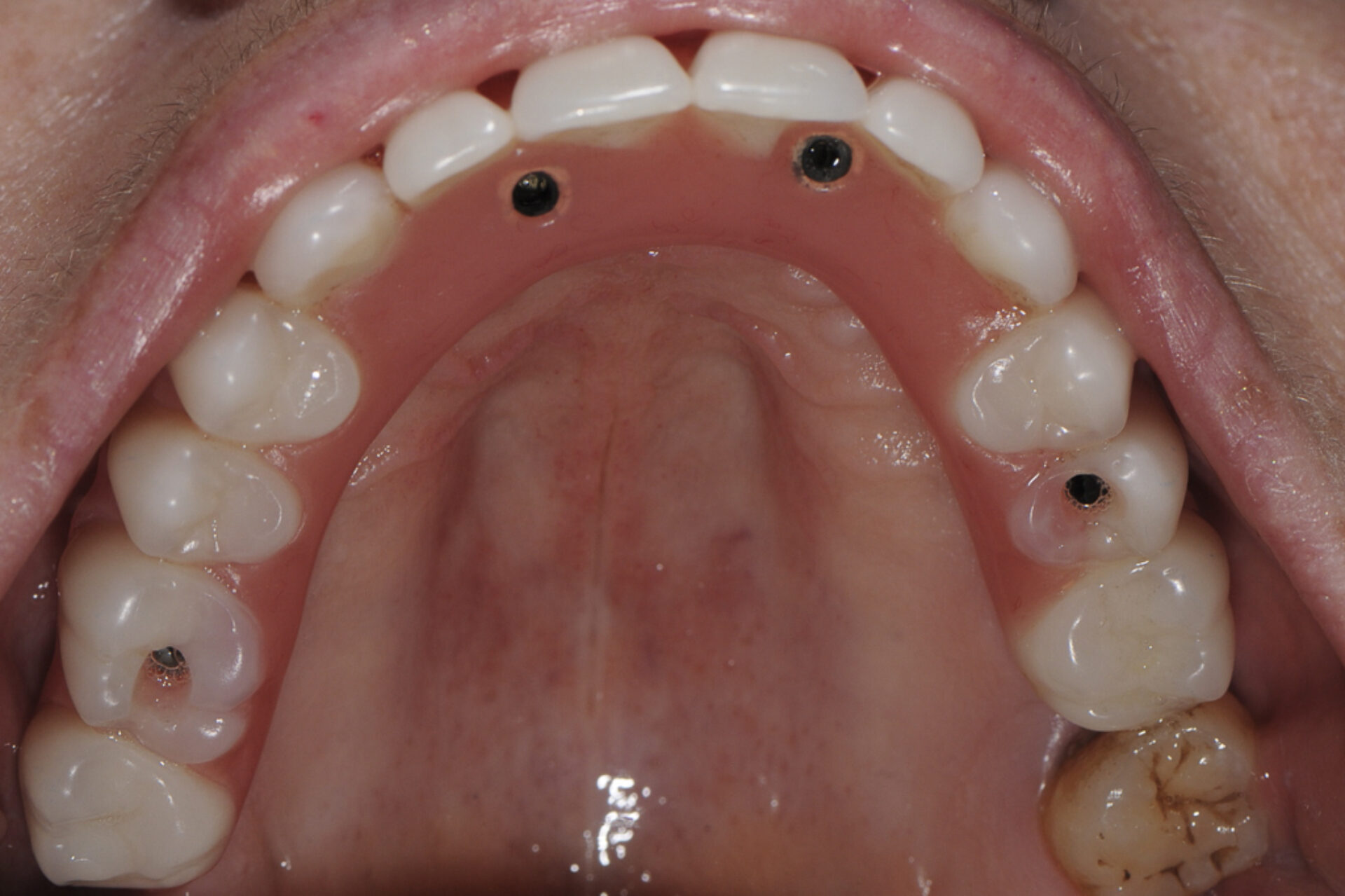
Before

After
Case Details
The Case
- 41 Years Old
The Problems
- Gum disease
- Tooth decay
- Failing dental bridges
- Uneven choreography of the gums
The Solution
- Upper All on 4
- Timeframe: 3 Days
- Original Treatment Early 2008
Doctors Comments
This patient had gum disease which has lead to recession and unevenness of the gum line but the main issues were to with the bridges that she had done overseas. The teeth that supported the bridges were decayed beyond repair and it was no longer possible to save them and use them as supports for new bridgework. Even if the teeth could be saved the unevenness of the gum line could not have been easily corrected without the treatment that she ultimately chose.
In the treatment planning, the other consideration was that there were three teeth unaffected by tooth decay and which could have been saved. One option was to keep those teeth and only replace the ones that had to be removed. However whilst a more conservative approach would have created a situation where the continuity of the bridge is broken and its edges visible on either side of the retained teeth and because we would have had to work around the positions and orientation of existing teeth it would have reduced our flexibility in designing the restoration to the best possible aesthetics and comfort. The other problem with retaining certain teeth in the upper was that the fixtures would have had to be placed straight" and there was no bone in the back of the jaw for straight dental implants. By sacrificing the three teeth that were relatively healthy the roots were not in the way and it was possible to place the back implants at an angle and avoid bone grafting. A better design and more balanced aesthetics were made possible by the All On 4 treatment that this patient received which incorporates aesthetic gum replacement.
In the lower the left bridge was not at an ideal occlusal plane and caved in. We replaced this bridge so as to further improve the bite and function.
The treatment plan also involved retaining a single tooth at the very back. The rationale for this was to retain the ability of the patient to gauge the biting pressures allowing her to better control the forces of the bite. This is helpful especially in the initial period of healing of the dental implants as it reduces the natural forces imparted on the supporting fixtures and enhances the conditions for their undisturbed adaptation.
The Process

1. This picture illustrates uneven gums gappy margins of the upper bridge with underlying tooth decay and three relatively healthy teeth on the right side. The lower left bridge is visibly caved down destabilizing the bite.

2. Treatment involved removal of all upper teeth (except one very back tooth which was not visible) leveling of the gumline with an alveolectomy and an immediate All-on-4 dental implants restoration incorporating aesthetic gum replacement. The lower right bridge was replaced to the correct height for an optimal plane of occlusion (bite).

3. The upper replacement teeth were removed 15 months after implant surgery to reveal complete healing and healthy gums.

4. The upper fixed replacement teeth were re-fitted over the dental implants for another 24 months before next review.

5. An X-ray taken at 15 months shows angulated fixtures in the back and straight fixtures in the front placed using a conventional All On 4 protocol.





